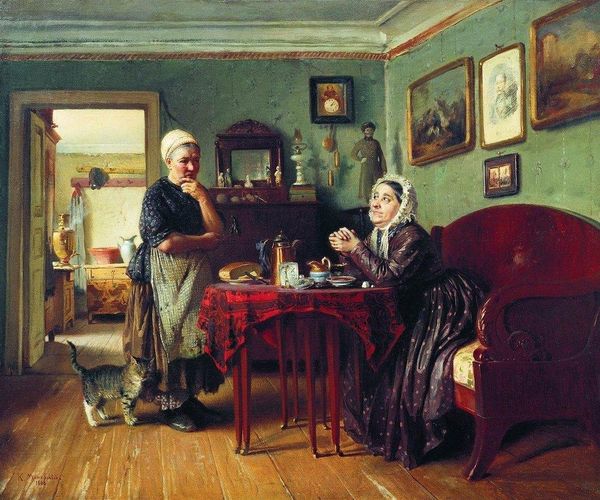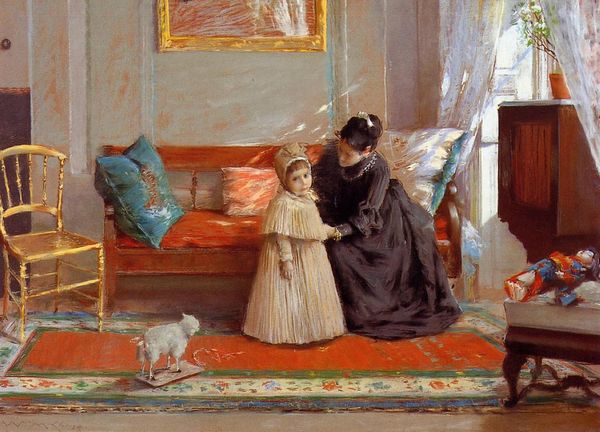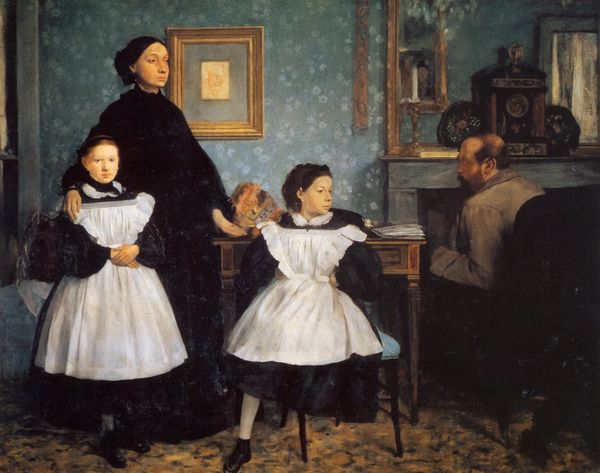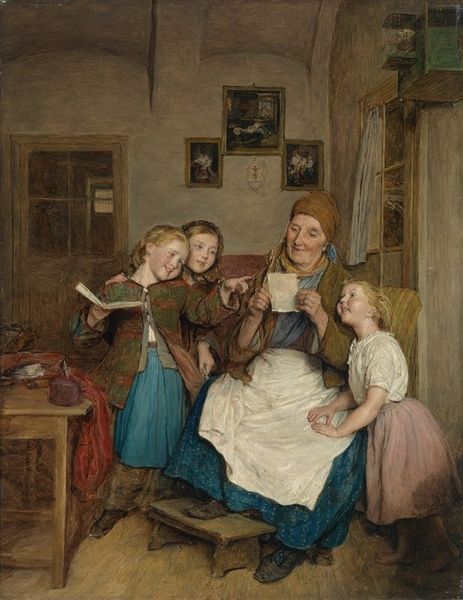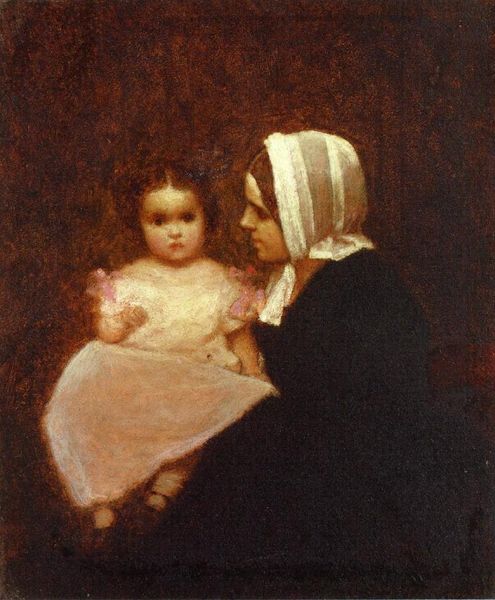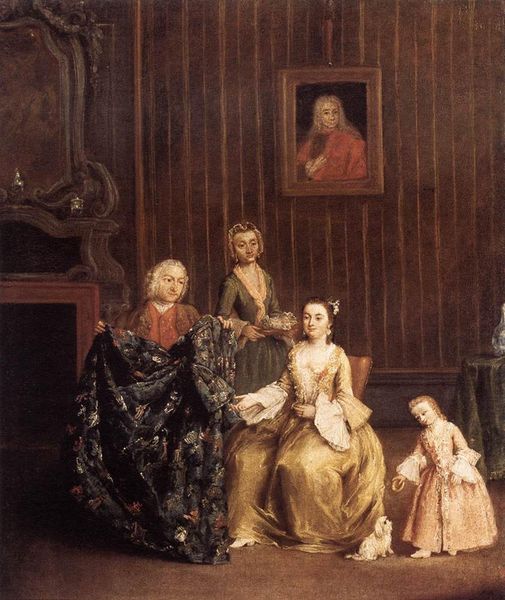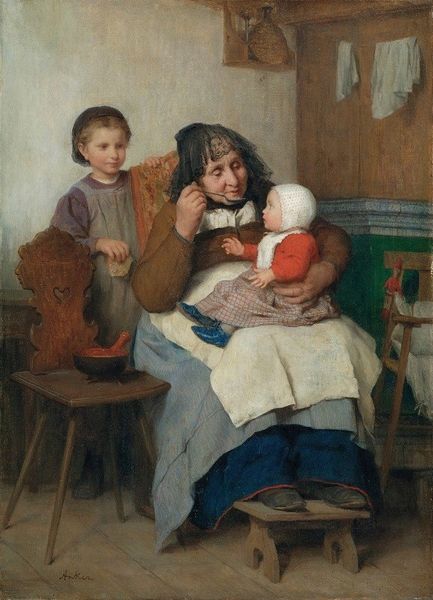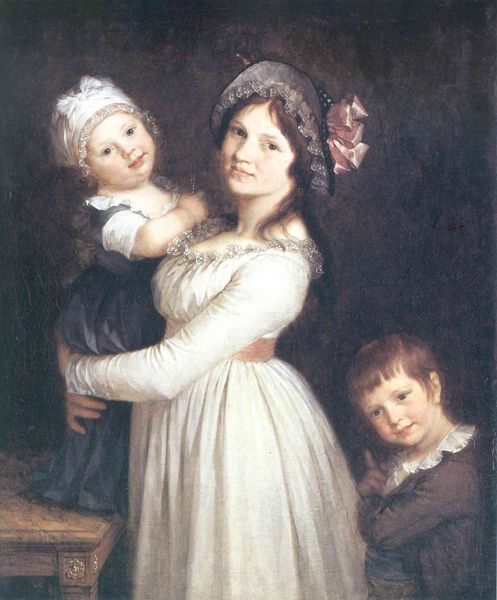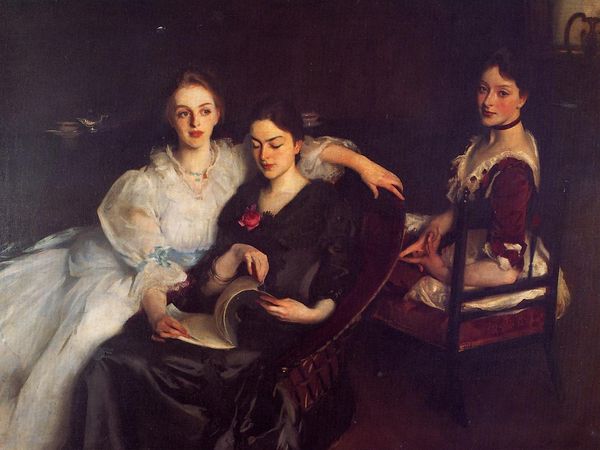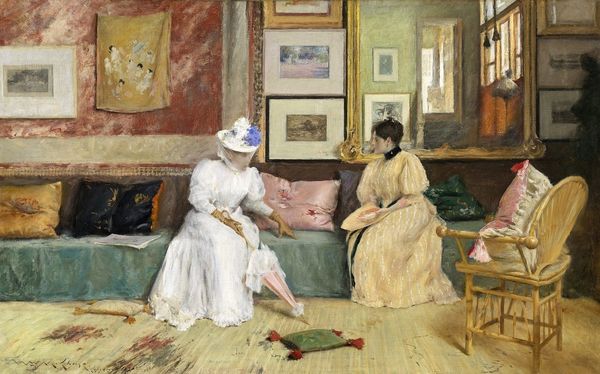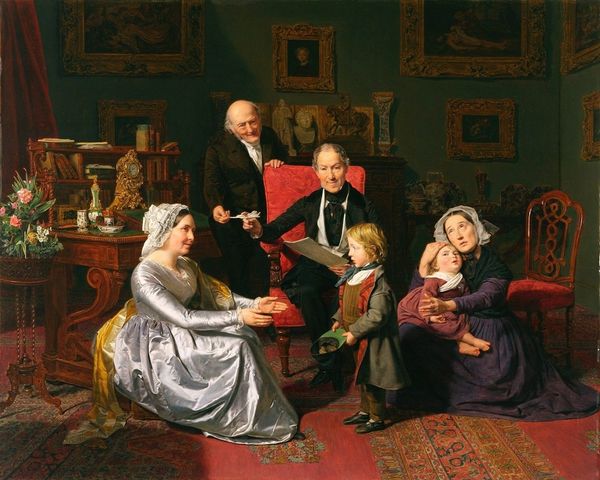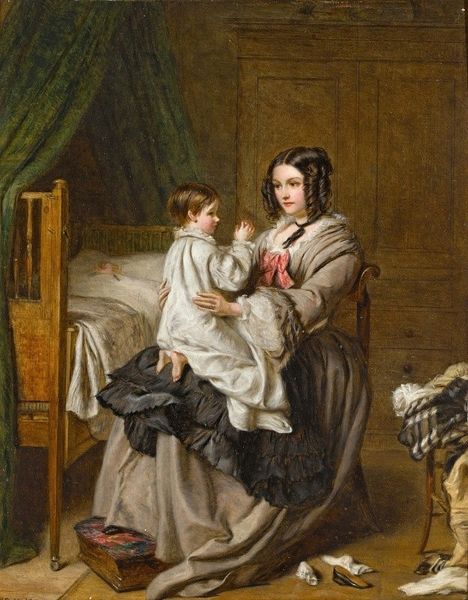
painting, oil-paint
#
painting
#
oil-paint
#
oil painting
#
group-portraits
#
genre-painting
#
academic-art
#
portrait art
Copyright: Public domain
Editor: This is Lawrence Alma-Tadema’s "My Studio," painted in 1867 using oil paint. It’s currently at the Groninger Museum. I find the composition intriguing – it feels both intimate and staged. What aspects of this piece do you find most compelling? Curator: It's compelling precisely because it stages a specific kind of intimacy, one rooted in Victorian domesticity. The presence of the women, and particularly the child, invites us to consider the roles assigned to women during this period. How does this seemingly serene domestic scene also reflect the constraints and expectations placed upon women, particularly in relation to art and creative spaces? Editor: I see what you mean. It's not just a snapshot; it's making a statement about women’s role in the artistic process, or perhaps, their restricted role. What about the inclusion of a painter's dog in this family gathering? Does it have symbolic meaning, too? Curator: Absolutely. Dogs often represent fidelity and domesticity. In this context, the dog could underscore the importance of home and family, but I'm more interested in its subtextual meanings when associated with representations of idealized femininity, where are those boundaries between desire and servitude, representation and exploitation in gendered domestic environments. Do the representations conform or deviate from expected roles within the private spaces depicted? What narratives are presented on a cultural level? Editor: That's a perspective I hadn't considered before. So, the artwork isn't just about depicting a studio, it is asking broader questions about cultural assumptions. Curator: Precisely. Alma-Tadema offers us a window, not just into a space, but into the complex intersection of gender, class, and artistic representation. By asking who has access to that space, how they use it, and how the work functions in this domestic narrative, the studio becomes less a personal artistic space and more of a nexus for understanding socio-historical expectations. Editor: I appreciate you connecting the dots in terms of the Victorian societal context. Curator: The painting then becomes a mirror reflecting not just its subjects, but the society that shaped their roles and representations.
Comments
No comments
Be the first to comment and join the conversation on the ultimate creative platform.
